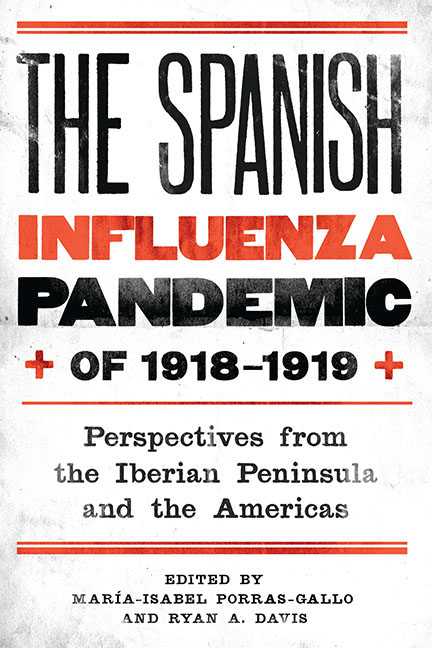 The Spanish Influenza Pandemic of 1918–1919
The Spanish Influenza Pandemic of 1918–1919 from Part One - Scientific Discourse: Now and Then
Published online by Cambridge University Press: 14 March 2018
In Brazil the first systematic scientific discussions about the Spanish flu epidemic took place in September 1918, after members of the Brazilian Medical Mission and soldiers of the Brazilian army—whose ships had anchored in Dakar, Senegal (then a French colony)—contracted the disease, many of whom died. Dakar was one of the main ports for the transit of international troops headed for the war in Europe. While the Brazilian government was discussing how to send medicines to victims and whether to bring all their soldiers and doctors in Africa back to Brazil, the Brazilian newspapers published articles telling of the visit of the English ship Demerara to Brazil. The ship departed England from Liverpool and docked at Rio de Janeiro on September 14, after stopping at Lisbon, Recife, and Salvador. During the trip various passengers took ill and five people died. In Rio de Janeiro the sick were taken to the Hospital de Isolamento (Hospital of Isolation), and the ship was disinfected by Brazilian sanitation authorities. Many passengers entered the city, some of whom became ill in the following days. In late September information about patients in port towns began to be published nationwide, and within a few days victims of the Spanish flu were found in the interior of Brazil.
An illness that aroused little attention in the medical community in the 1910s, the flu was classified by most scientists as a microbial, endemic, and worldwide disease that caused nasal mucus, a mild fever, a cough, and body pains, generally without many complications or risk of death. In short, it was considered a benign disease. According to the “Bibliografia brasileira da grippe” published in 1919 in the Archivos Brasileiros de Medicina, thirteen works about the disease had been published in the country in the nineteenth century: two articles discussed the 1889–90 pandemic, four dealt with the epidemic of 1835, and seven dealt with flu or related illnesses in other years, whether epidemic or not. In contrast, between 1901 and 1917, twentyeight studies were published in Brazil. The authors of these texts discussed flu epidemics of the late nineteenth and early twentieth centuries, giving clinical descriptions of patients, information about treatments, and their thoughts on Pfeiffer's bacillus.
To save this book to your Kindle, first ensure [email protected] is added to your Approved Personal Document E-mail List under your Personal Document Settings on the Manage Your Content and Devices page of your Amazon account. Then enter the ‘name’ part of your Kindle email address below. Find out more about saving to your Kindle.
Note you can select to save to either the @free.kindle.com or @kindle.com variations. ‘@free.kindle.com’ emails are free but can only be saved to your device when it is connected to wi-fi. ‘@kindle.com’ emails can be delivered even when you are not connected to wi-fi, but note that service fees apply.
Find out more about the Kindle Personal Document Service.
To save content items to your account, please confirm that you agree to abide by our usage policies. If this is the first time you use this feature, you will be asked to authorise Cambridge Core to connect with your account. Find out more about saving content to Dropbox.
To save content items to your account, please confirm that you agree to abide by our usage policies. If this is the first time you use this feature, you will be asked to authorise Cambridge Core to connect with your account. Find out more about saving content to Google Drive.